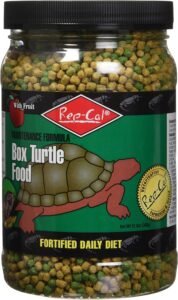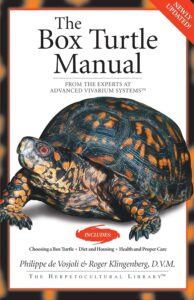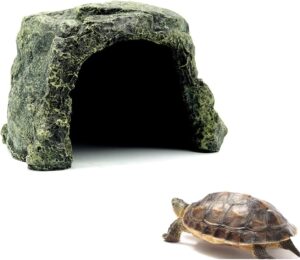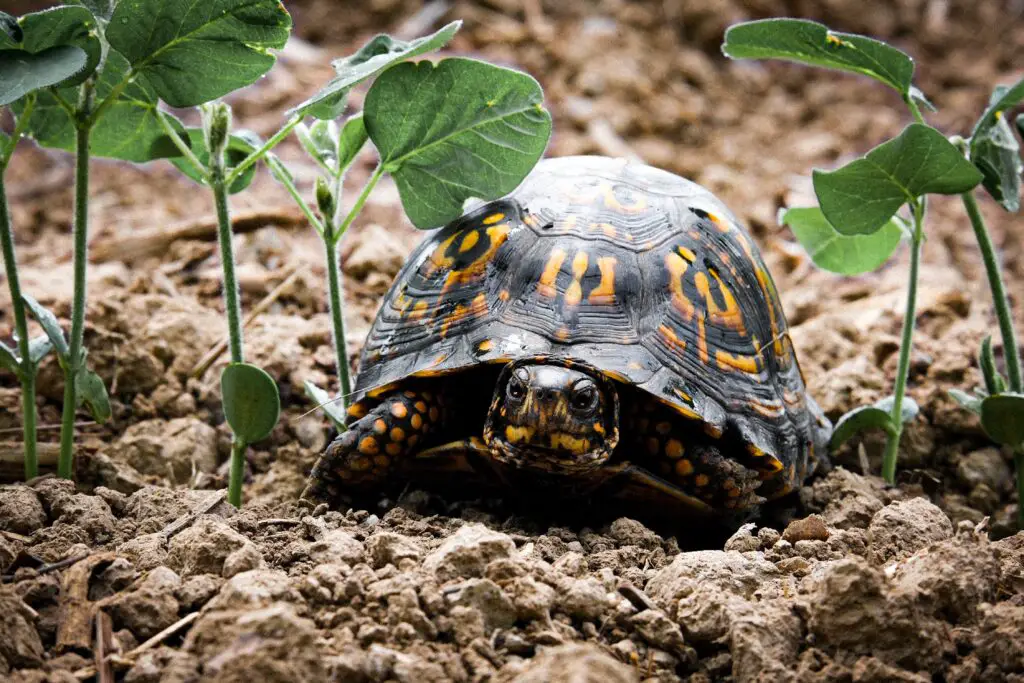How to take care of a box turtle
How to take care of a box turtle: Box turtles, known for their unique ability to retract into their protective shells, are fascinating reptiles that make captivating pets. They belong to the Terrapene genus and are commonly found in North America.
With their distinctive domed-shaped shells, box turtles provide a charismatic presence in any reptile enthusiast’s collection. When considering a box turtle as a potential pet, it is essential to understand the commitment required for their care and well-being.
These creatures have specific needs that must be met in order for them to thrive in captivity. Their longevity also demands careful consideration, as they can live for several decades when provided with proper care.
Brief overview of box turtles as pets
Box turtles are often chosen as pets due to their small size and manageable habitat requirements. They generally reach a length of 4-8 inches and have a lifespan of 30-50 years if given appropriate care.
However, it’s important to note that box turtles may not be suitable for everyone. Unlike other reptiles, such as snakes or lizards, box turtles require more interaction and environmental stimuli due to their higher intelligence level.
They can learn routines and recognize their owners over time. This makes them rewarding pets but also necessitates dedicated attention from their keepers.
Importance of proper care and habitat for their well-being
 The key element in maintaining the health and well-being of box turtles is providing an environment that simulates their natural habitat as closely as possible. A suitable enclosure should have ample space for the turtle to move around comfortably while offering various hiding spots and areas with different temperatures.
The key element in maintaining the health and well-being of box turtles is providing an environment that simulates their natural habitat as closely as possible. A suitable enclosure should have ample space for the turtle to move around comfortably while offering various hiding spots and areas with different temperatures.
The temperature within the enclosure is crucial for regulating the turtle’s metabolism, digestion, behavior, and overall health. Maintaining a temperature gradient is essential, with a warm basking area reaching approximately 85-90°F (29-32°C) and a cooler side averaging around 75°F (24°C).
This allows the turtle to self-regulate its body temperature as needed. Additionally, box turtles require exposure to ultraviolet B (UVB) lighting to synthesize vitamin D3, which is crucial for calcium metabolism and shell health.
Proper lighting should provide UVB rays within the range of 290-320 nanometers, mimicking sunlight. Access to natural sunlight outdoors or artificial UVB lights inside the enclosure is critical for their well-being.
Creating the Ideal Habitat
When it comes to creating the ideal habitat for your box turtle, selecting the right enclosure is crucial. The size of the enclosure should be spacious enough to allow your turtle to move around comfortably. As a general rule of thumb, a single adult box turtle should have an enclosure that is at least four times its shell length in both width and length.
The materials used for the enclosure should be sturdy and escape-proof, such as glass or high-quality plastic. Avoid enclosures with large holes that could potentially cause injury or allow your turtle to escape.
Design considerations are also important when setting up the habitat. Incorporate different areas within the enclosure that mimic their natural environment, such as hiding spots like rocks or logs.
Ensure that there are no sharp edges or objects that could harm your turtle while they explore their surroundings. Additionally, providing a secure lid or covering for the enclosure is essential to prevent escapes and protect your turtle from potential predators.
Box turtles are ectothermic creatures, meaning they rely on external heat sources to regulate their body temperature. Maintaining appropriate temperatures within their habitat is crucial for their overall health and well-being.
Providing a temperature gradient within the enclosure:
How to take care of a box turtle: It’s important to create a thermal gradient within the box turtle’s habitat so they can choose their preferred temperature zone at any given time. This can be achieved by setting up heat sources on one end of the enclosure while keeping the other end cooler. You can use heating pads designed specifically for reptiles or heat lamps with thermostats to maintain proper temperatures.
The warmest spot in the enclosure should range between 85-90°F (29-32°C), while cooler areas should range between 70-75°F (21-24°C). This temperature gradient allows box turtles to thermoregulate by moving between warm and cooler areas as needed.
UVB lighting and its significance for vitamin D synthesis:
 UVB lighting plays a crucial role in the health of box turtles as it enables them to synthesize vitamin D3, which is essential for calcium absorption. Without adequate UVB exposure, box turtles can develop serious health issues like metabolic bone disease. To ensure your turtle receives sufficient UVB radiation, invest in a high-quality UVB bulb specifically designed for reptiles.
UVB lighting plays a crucial role in the health of box turtles as it enables them to synthesize vitamin D3, which is essential for calcium absorption. Without adequate UVB exposure, box turtles can develop serious health issues like metabolic bone disease. To ensure your turtle receives sufficient UVB radiation, invest in a high-quality UVB bulb specifically designed for reptiles.
These bulbs should be placed within the enclosure, preferably with no glass or plastic barriers that could block or filter the UVB rays. It’s important to follow the manufacturer’s instructions regarding bulb distance and duration of daily exposure based on your specific species of box turtle.
By providing a suitable enclosure size, secure materials, proper temperature gradients, and adequate UVB lighting, you can create an ideal habitat that closely mimics your box turtle’s natural environment. Remember that each species may have slightly different requirements, so it’s crucial to research and understand the specific needs of your particular type of box turtle.
Substrate Selection and Maintenance
Choosing appropriate substrates for box turtles’ comfort and health
Box turtles require a suitable substrate that promotes their comfort, mimics their natural habitat, and provides appropriate moisture levels. Opting for natural options such as soil, sand, or coconut coir is highly recommended.
These substrates allow the turtles to burrow, dig, and exhibit their innate behaviors. Soil works well as it retains moisture while providing a stable surface for the turtle to traverse.
Sand can be mixed in small quantities to enhance drainage and create a more varied texture. Coconut coir is another great option due to its excellent water retention properties which help maintain humidity levels within the enclosure.
Avoiding harmful substrates such as cedar shavings or gravel
While some substrates may seem appealing aesthetically, they can be detrimental to the health of box turtles. Cedar shavings should be avoided as they release aromatic oils that can irritate the turtle’s respiratory system and cause skin reactions. Gravel is another inappropriate choice since it poses risks of ingestion if accidentally consumed during feeding or exploration activities.
Regular cleaning and spot-cleaning techniques to maintain hygiene
Maintaining proper hygiene within the turtle’s enclosure is vital for their overall health. Regular cleaning of the substrate involves removing feces, uneaten food, shed skin, and any other debris that may accumulate over time.
Spot-cleaning should be done daily using tongs or a small scoop to remove waste promptly without disturbing the rest of the enclosure. A thorough cleaning of the entire enclosure should occur at least once a month by replacing all or part of the substrate depending on its condition.
By carefully selecting suitable substrates based on comfort and health considerations, avoiding harmful options like cedar shavings or gravel, and implementing regular cleaning routines, you can ensure a safe and conducive environment for your box turtle to flourish. Remember, maintaining a clean and comfortable substrate is essential for their overall well-being and will contribute to their longevity in captivity.

Feeding Box Turtles
Understanding the Ideal Diet Composition
One of the most critical aspects of box turtle care is providing them with a well-balanced diet. Box turtles are omnivores, meaning they eat both plant and animal matter.
A proper diet for a box turtle should consist of a balanced mix of proteins, vegetables, fruits, and greens. This diverse diet ensures that they receive all the necessary nutrients for their growth and overall well-being.
Balanced Mix of Proteins (Insects), Vegetables, Fruits, and Greens
Protein-rich foods play a crucial role in a box turtle’s diet as they aid in muscle development and provide essential amino acids. Insects such as crickets, mealworms, earthworms, or snails are excellent sources of protein for box turtles.
It is important to vary the protein sources to provide a more diverse nutrient profile. Box turtles also require a variety of vegetables and leafy greens to fulfill their dietary needs.
Dark leafy greens like collard greens, kale, mustard greens, or dandelion greens are rich in vitamins A and K. Additionally, providing different vegetables such as carrots, squash, bell peppers, or zucchini offer additional nutrients. Fruits make up another essential component of a box turtle’s diet.
Berries like strawberries or blueberries can be offered occasionally along with other fruits like melons or bananas. However, it is important not to overfeed on fruits due to their sugar content.
Calcium Supplementation to Prevent Shell Deformities
Calcium plays an integral role in maintaining the health and strength of a box turtle’s shell. Insufficient calcium intake can lead to shell deformities such as pyramiding or soft shells.
To ensure adequate calcium levels in their diet, it is recommended to include calcium supplements. One common method is to provide a cuttlebone, which can be attached to the enclosure.
Box turtles will naturally bite at it, helping them obtain the necessary calcium intake. Additionally, powdered calcium supplements can be sprinkled on their food a few times a week.
Discussing Specific Food Items That Are Beneficial or Harmful to Box Turtles
While there are many suitable food options for box turtles, some items should be approached with caution or avoided altogether. Beneficial foods include dark leafy greens like collard greens and dandelion greens, high-protein insects such as crickets or mealworms, and a variety of safe vegetables and fruits. On the other hand, certain foods should be avoided due to their potential harm to box turtles.
These include toxic plants like rhubarb leaves and certain human foods such as dairy products or processed foods high in salt or sugar. It is essential to research any unfamiliar food items thoroughly before introducing them into a box turtle’s diet.
Consulting with a veterinarian who specializes in reptiles can provide valuable guidance on suitable dietary choices for your box turtle companion. Remember that each individual turtle may have specific dietary preferences and requirements, so observing your pet’s behavior and consulting with experts will help ensure you are providing the best possible nutrition for your cherished box turtle.
Providing Enrichment and Exercise Opportunities
A Sanctuary of Stimulation: Designing a Box Turtle’s Haven
 How to take care of a box turtle: Box turtles, like all creatures, yearn for mental and physical stimulation to thrive. To cater to their innate instincts, it is imperative to create a habitat that offers various opportunities for exploration and activity.
How to take care of a box turtle: Box turtles, like all creatures, yearn for mental and physical stimulation to thrive. To cater to their innate instincts, it is imperative to create a habitat that offers various opportunities for exploration and activity.
Begin by incorporating hiding spots throughout their enclosure. These can include natural elements such as rocks, logs, or even purpose-built shelters.
These sanctuaries not only provide a secure retreat for your box turtle but also mimic their natural environment. Furthermore, consider including climbing structures to encourage exercise and dexterity.
Implement branches or platforms at different heights within the enclosure, allowing your turtle to engage in vertical movement—mimicking their wild counterparts’ behavior as they seek elevated vantage points. Remember to ensure the structures are sturdy and secure to prevent any potential accidents.
Puzzles and Toys: Nurturing Natural Behaviors
To truly enhance your box turtle’s quality of life, embrace interactive puzzles and toys that stimulate their cognitive abilities while promoting natural behaviors. One such option is the introduction of puzzle feeders. These clever contraptions challenge your turtle’s problem-solving skills by requiring them to manipulate objects or navigate through obstacles in order to access their food.
Another engaging option is the use of treat-dispensing toys that require manipulation or physical exertion from your pet. By encouraging them to roll, push, or solve puzzles in order to obtain rewards like insects or food pellets hidden inside these toys, you are actively stimulating their minds while satisfying their hunger.
Additionally, consider adding sensory enrichment elements into the enclosure. Incorporate scented materials like dried herbs or flowers with safe non-toxic plants around the habitat edges which will allow your turtle to explore new smells while adding visual interest.
The Art of Environmental Rotation
To prevent habitat monotony, periodically rotate and introduce new elements into your box turtle’s environment. This can include rearranging hiding spots, introducing different climbing structures, or even adding new toys. By doing so, you provide a fresh experience for your pet while stimulating their curiosity and encouraging exploration.
Remember to observe your turtle’s response to the changes you make. Each individual may have unique preferences and reactions, so be attentive to their behavior and adjust the enrichment elements accordingly.
In essence, by providing a sanctuary of stimulation through hiding spots and climbing structures, as well as incorporating interactive toys and puzzles that nurture natural behaviors, you foster an enriching environment for your box turtle. This not only contributes to their overall well-being but also promotes physical exercise, mental acuity, and a more fulfilling existence in captivity.
Water Requirements
How to take care of a box turtle: Water plays a vital role in the overall health and well-being of box turtles. It is not only necessary for hydration but also facilitates various essential physiological functions.
Clean, fresh water should be readily available at all times within the turtle’s enclosure. Box turtles should have access to both shallow water dishes for drinking and deeper dishes for soaking.
Hydration is crucial as it helps maintain proper bodily functions, aids digestion, and promotes healthy organ function. Without adequate hydration, box turtles may experience dehydration, which can lead to serious health issues.
Dehydration symptoms include sunken eyes, dry skin or shell, lethargy, loss of appetite, and constipation. Soaking is another important aspect of a box turtle’s water requirements.
Soaking serves multiple purposes such as maintaining proper hydration levels by allowing the turtle to absorb water through its skin and prevent dehydration. It also aids shedding by softening the skin and shell, making it easier for the turtle to molt.
Providing shallow water dishes for drinking and deeper dishes for soaking
A shallow dish filled with clean water should be placed in the enclosure to provide box turtles with easy access to drinking water throughout the day. The dish should be large enough for the turtle to comfortably lower its head into without any risk of drowning or tipping over.
In addition to a shallow drinking dish, deeper dishes or containers should be provided specifically for soaking purposes. These containers should be large enough so that when filled with warm (not hot) water, they allow the turtle to fully submerge itself if desired.
Soaking helps keep their skin hydrated, aids in the natural shedding process, and helps maintain overall health. It is important to ensure that both the drinking and soaking water is kept clean and fresh.
The water dishes should be cleaned regularly to prevent the buildup of bacteria or pathogens. Daily monitoring of water quality is crucial, as turtles may defecate or introduce debris into their water sources, necessitating immediate cleaning and replacement if needed.
Healthcare Considerations: How to take care of a box turtle
Regular check-ups with a reptile veterinarian Just like any other pet, regular visits to a reptile veterinarian are crucial for maintaining the health and well-being of your box turtle.
Reptile veterinarians have the specialized knowledge and experience necessary to provide comprehensive healthcare for these unique creatures. They can conduct thorough examinations, administer vaccinations if required, and offer valuable advice on nutrition, habitat maintenance, and overall turtle wellness.
Scheduling annual check-ups is recommended, but don’t hesitate to consult a professional if you notice any concerning changes in your turtle’s behavior or health between appointments.
Common health issues in box turtles: Shell problems like pyramiding or cracks
Shell problems are among the most common health issues encountered in box turtles. Pyramiding refers to an abnormal growth pattern of the shell that results from suboptimal environmental conditions or poor nutrition during early development.
To prevent pyramiding, it is essential to provide appropriate temperature and humidity levels within the enclosure and ensure a balanced diet consisting of calcium-rich foods. Cracks in the shell can occur due to trauma or inadequate care.
If you notice any cracks in your turtle’s shell, it is imperative to seek veterinary assistance immediately as this may lead to infections or further complications.
Common health issues in box turtles: Respiratory infections
Respiratory infections can pose severe threats to box turtles’ well-being if left untreated. These infections often occur due to poorly maintained enclosures with inadequate ventilation or high humidity levels.
Common symptoms include wheezing, labored breathing, nasal discharge, lethargy, and loss of appetite. If you suspect your turtle might have a respiratory infection, it is vital to consult a reptile veterinarian promptly for accurate diagnosis and appropriate treatment, which may involve antibiotics and supportive care.
To sum up how to take care of a box turtle
Providing proper healthcare for your box turtle is essential to ensure their longevity and overall quality of life. Regular check-ups with a reptile veterinarian allow for early detection and prevention of potential health issues.
Remember to be vigilant about common problems like shell abnormalities such as pyramiding or cracks, as well as respiratory infections. By following the guidelines outlined in this article and seeking professional assistance when needed, you can create a thriving environment for your box turtle and enjoy the companionship of these remarkable creatures for years to come.
Further Reading
How To Keep My Turtle Tank From Smelling
How To Decorate a Turtle Tank: DIY Guide


